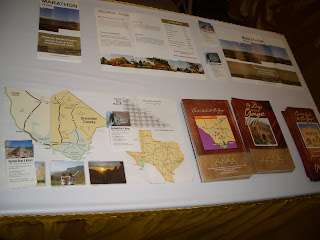Horrible puns aside, here's their range map, via allaboutbirds.org -
Our local checklist shows them as "accidental" (having 1-3 records per DECADE).
The most recent fall/winter beauty:
While the top photo shows enough to be diagnostic, a bit of long-spur is always fascinating!
* Edit: one reader asked if all male birds have a longer 'spur' - this one is a female, and all 'long spurs' have it regardless of age/sex.
For comparison, Hwy 90 also coughed up a few Vesper Sparrows - LALO is on the left, VESP is on the right - size may be distorted due to the camera angle, but take a look:
* eyebrow/line is strong and buffy on LALO, VESP lacks it but has a white eye ring
* auricular (ear/cheek patch) patterns is pronounced on LALO, streaky on VESP
* throat/breast is blurred and buffy for LALO, everything is fine, crisp and contrasty for VESP
Next up, tails!
Apologies for the birds not being *exactly* side by side - roadkill doesn't always pose on command. This shot does compare back streaks nicely, and in case you ever need to ID VESP vs. LALO by tail only, you can make out the rounder tips of VESP (L) and compare them to the sharp points of the LALO (R) tail. How deeply they are forked seems pointless with this combination. Amount of white (and brightness of it) is kind of interesting, however.
And a shot from below the tail:
Finally, a wing comparison.
The longspur wing (R) blocks the VESP primaries a bit, but note how much longer the LALO primary flight feathers are (for non-bird people, that's the wing tips from the outermost feathers until the ones with rufous edging, for our current purposes) compared to the secondary flight feathers (the rufous-edged wing feathers along the outermost edge of the wing). Vesper, at left, has a much rounder looking wing because the primaries are only slightly longer than the secondaries.
Unfortunately none of these show a nice leg/foot sample for VESP, but trust us - they have pinkish legs and their 'spur' is not particularly jaw-dropping. But until next time...
Please remember that picking up dead birds requires state/federal permits. Ours are through Texas A&M University and we strongly suggest checking every roadkill, every time (if it's safe to do so!) You never know what's out there. If you don't have permits and find something interesting, pick it up first (and bag it, tag it with date/location/cause of death if known), freeze it and contact someone with permits second. Call around, e-mail your nearest academic collection (TAMU is interested in things state-wide), but please do so with discretion - and get the specimen to the permit holder ASAP.


























